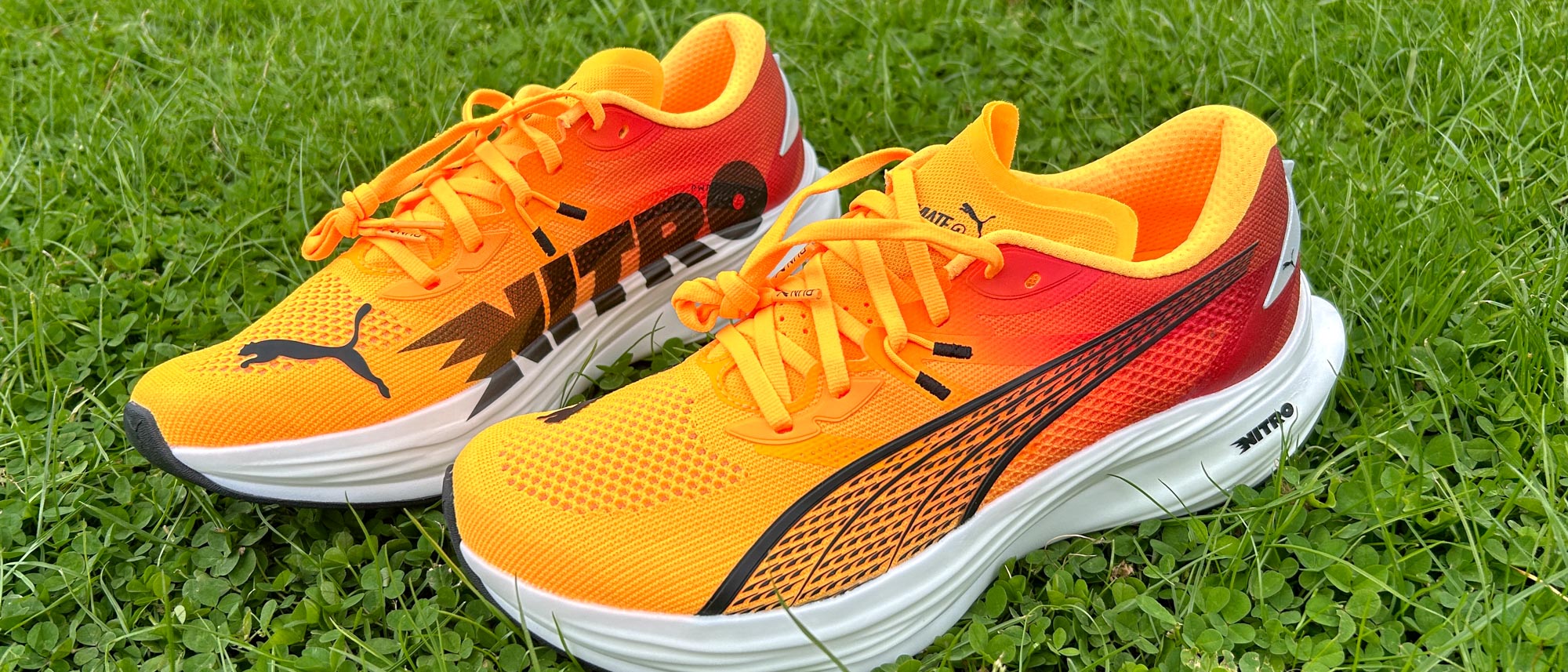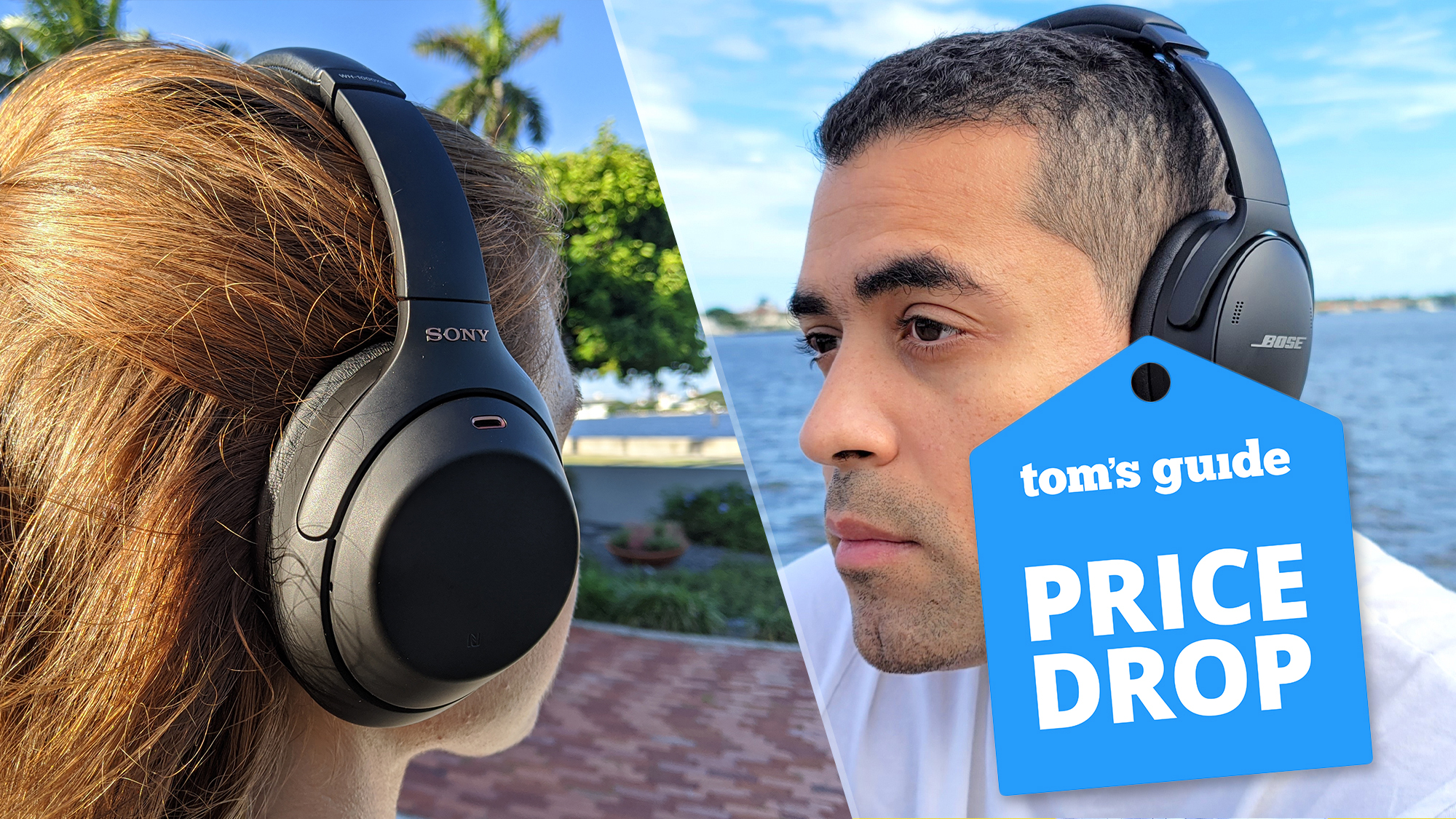Tom's Guide Verdict
The Puma Deviate Nitro 3 brings some of the propulsive features of carbon plate racing shoes to your everyday training, but it’s a bit heavy for really fast runs, and I prefer rival ‘super-trainers’ like the Saucony Endorphin Speed 4 and Adidas Boston 12.
Pros
- +
Versatile ride
- +
Plate for added propulsion
- +
Reliable grip
Cons
- -
Bit heavy for faster runs
- -
Firmer ride than others
- -
Heel design irritated my Achilles
Why you can trust Tom's Guide
Puma has made some of the best running shoes of the past few years, with the Velocity Nitro and Deviate Nitro lines standing out as offering an exceptional combination of value and performance. The Puma Deviate Nitro 3 is billed as a fast training shoe with a plate that you can use in partnership with one of the best carbon plate running shoes for racing, or as an all-rounder that you use for all your training and racing.
It is certainly a versatile running shoe, but I didn’t find the Deviate Nitro 3 as comfortable as I hoped on easy runs, and it doesn’t match the speed of other plated super-trainers — training shoes that use racing shoe foams and plates — like the Saucony Endorphin Speed 4.
Puma Deviate Nitro 3 review: price and availability
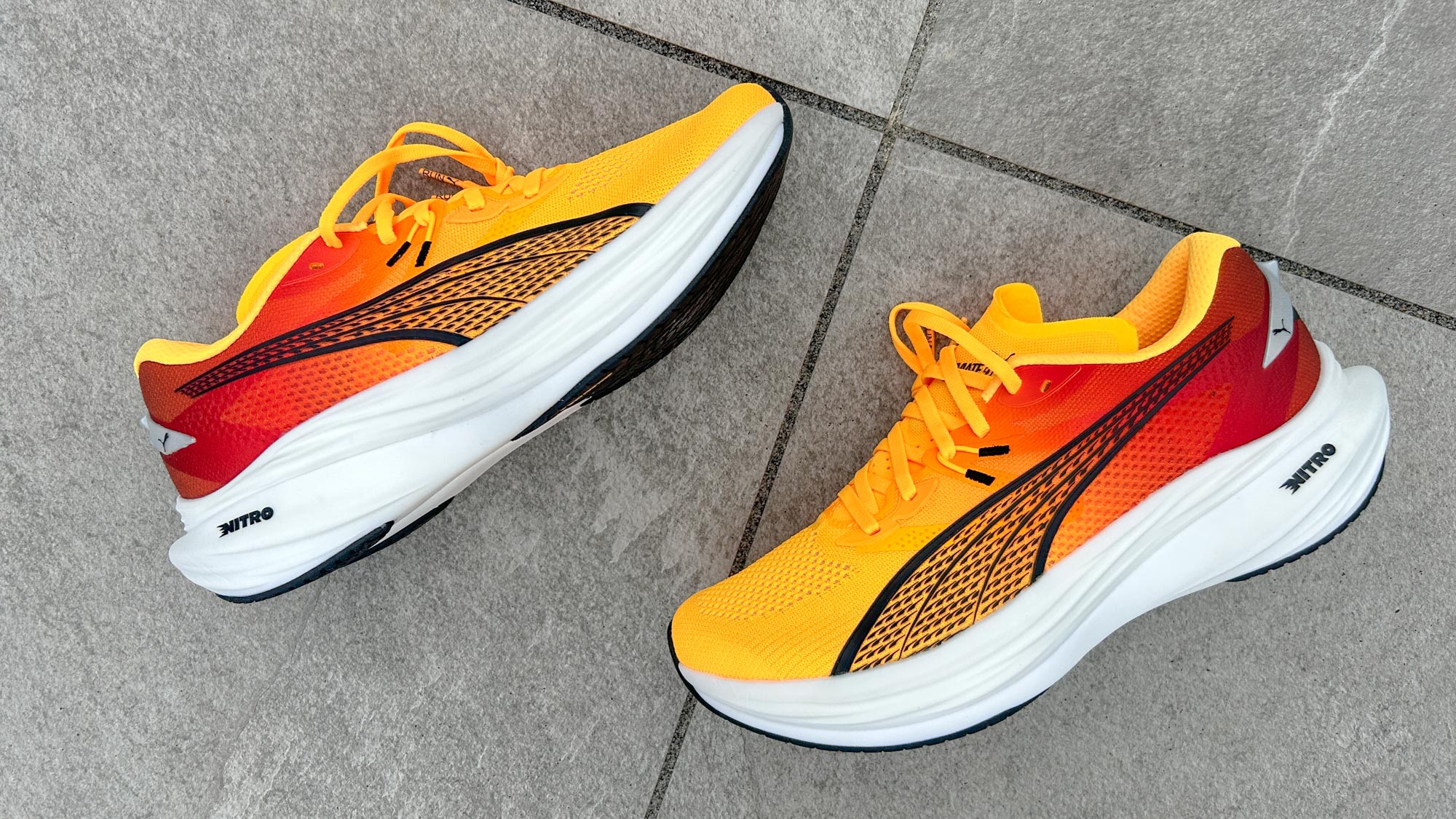
The Puma Deviate Nitro 3 launched in June 2024 and will go on sale in the US on 1st July. It costs $170 in the US and £150 in the UK, which is a price rise on the Puma Deviate Nitro 2, which costs $160 / £145. For a plated training shoe it’s still good value though, and cheaper than rivals like the Endorphin Speed 4 or New Balance FuelCell SuperComp Trainer v2.
Puma Deviate Nitro 3 review: Design
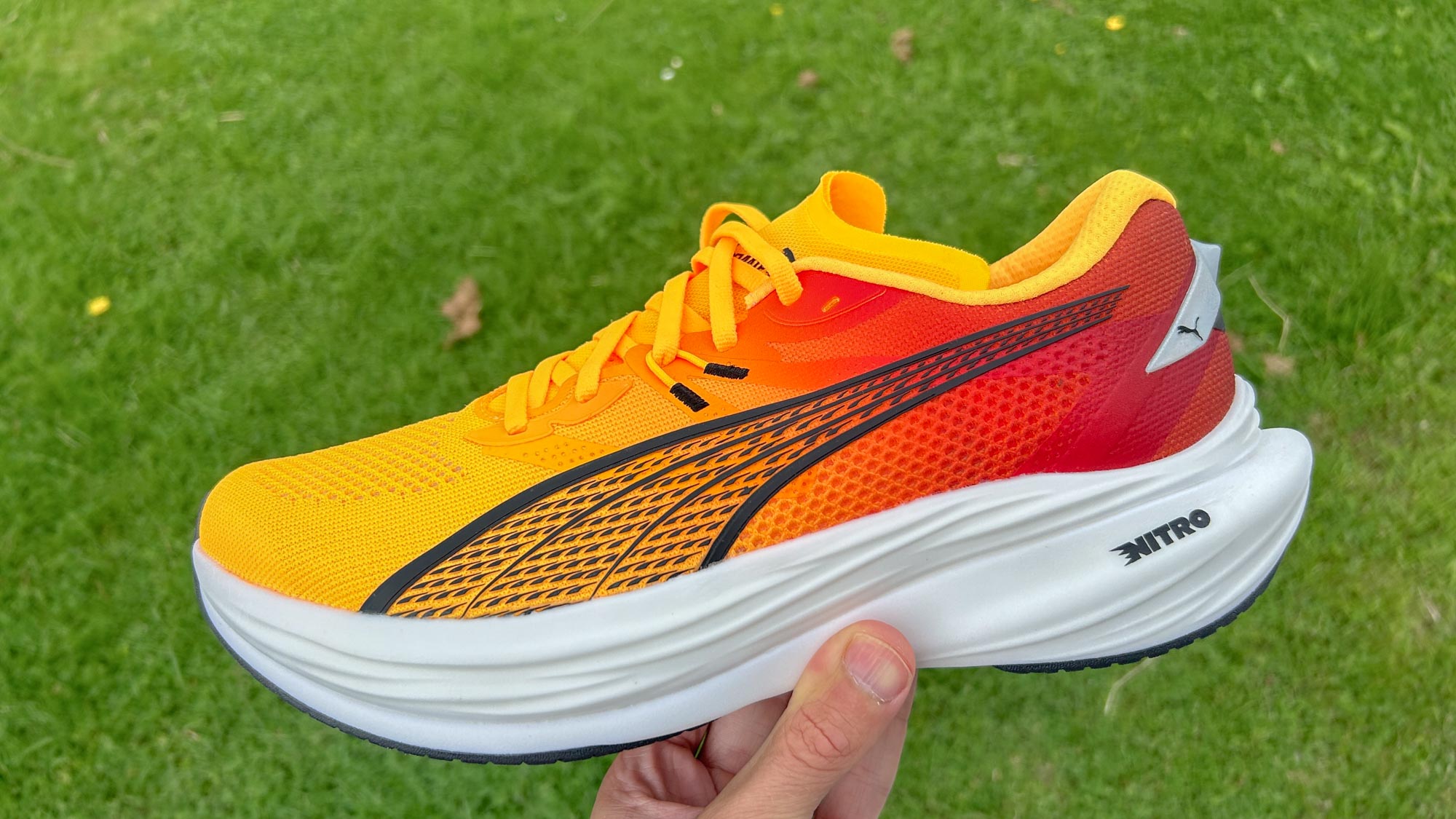
The Puma Deviate Nitro 3 launched in the Fireglow color I tested, though other designs are available already from third-party retailers. It has a higher stack than the previous models of the shoe, standing 39mm tall at the heel and 29mm at the forefoot for a 10mm drop. The Deviate Nitro 2 had an 8mm drop and a stacked height of 38mm at the heel and 30mm at the forefoot.
Along with being a little taller, the new shoe is heavier than its predecessor, tipping the scales at 10.1oz in my US size 10. That’s not especially heavy, but it’s heavier than most equivalent plated training shoes that are built to be able to handle faster runs, and it’s a 0.4oz rise in weight on the Deviate Nitro 2.
Upper
The Puma Deviate Nitro 3 has a breathable engineered knit upper with strips of the brand’s PWRTAPE used to add structure in certain areas, such as in the inside of the midfoot. The tongue is quite thick and there’s some padding around the collar of the shoe.
Along with a flexible internal heel counter at the base of the upper, the shoe has a plastic strip that runs around the middle of the back of the upper, with a small shark fin sticking out. Presumably this is also meant to add some structure to the shoe, along with looking gnarly, but I fear it contributed to the fit problem I had with the shoe where it irritated my Achilles tendons.
Midsole
The Deviate Nitro 3 has a dual-density midsole with the top layer of foam being Puma’s Nitro Elite, which is a nitrogen-infused PEBA material (this differs from the Nitro Elite foam used on the Fast-R 2 and Deviate Nitro Elite 3 racing shoes, which is made from aliphatic TPU). The bottom layer is made from Nitro foam, which is a nitrogen-infused TPEE material.
In between the two layers of foam is a forked, carbon-infused plate. This is there to stabilize the high stack of midsole foam and add more propulsion to your stride, but is forked rather than a full plate to make it more comfortable for daily use. Puma’s racing shoes use a full plate that’s stiffer and less suitable for general training runs as a result.
Outsole
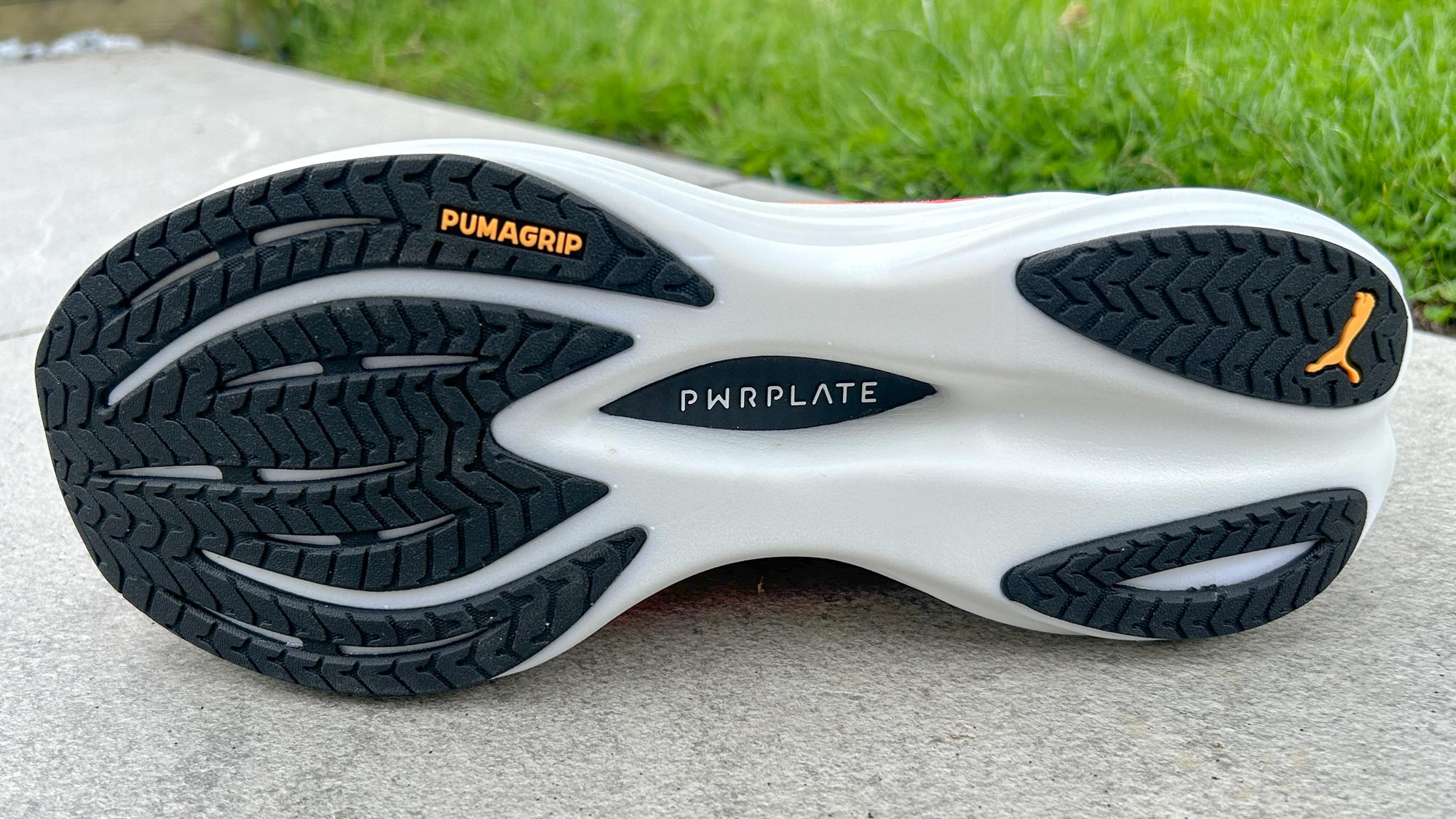
Puma has rightly become renowned for its excellent PUMAGRIP outsole rubber, which is used to cover the forefoot of the Deviate Nitro 3, along with the sides of the heel. There is a cutout in the middle of the bottom of the shoe that shows off the plate and helps to reduce the weight of the shoe overall.
I’ve mostly tested the Deviate Nitro 3 in dry conditions, but it has gripped well for me on light trails as well as the road, and I’ve tested many other PUMAGRIP shoes that have always delivered reliable traction on wet roads.
Puma Deviate Nitro 3 review: how's the fit?
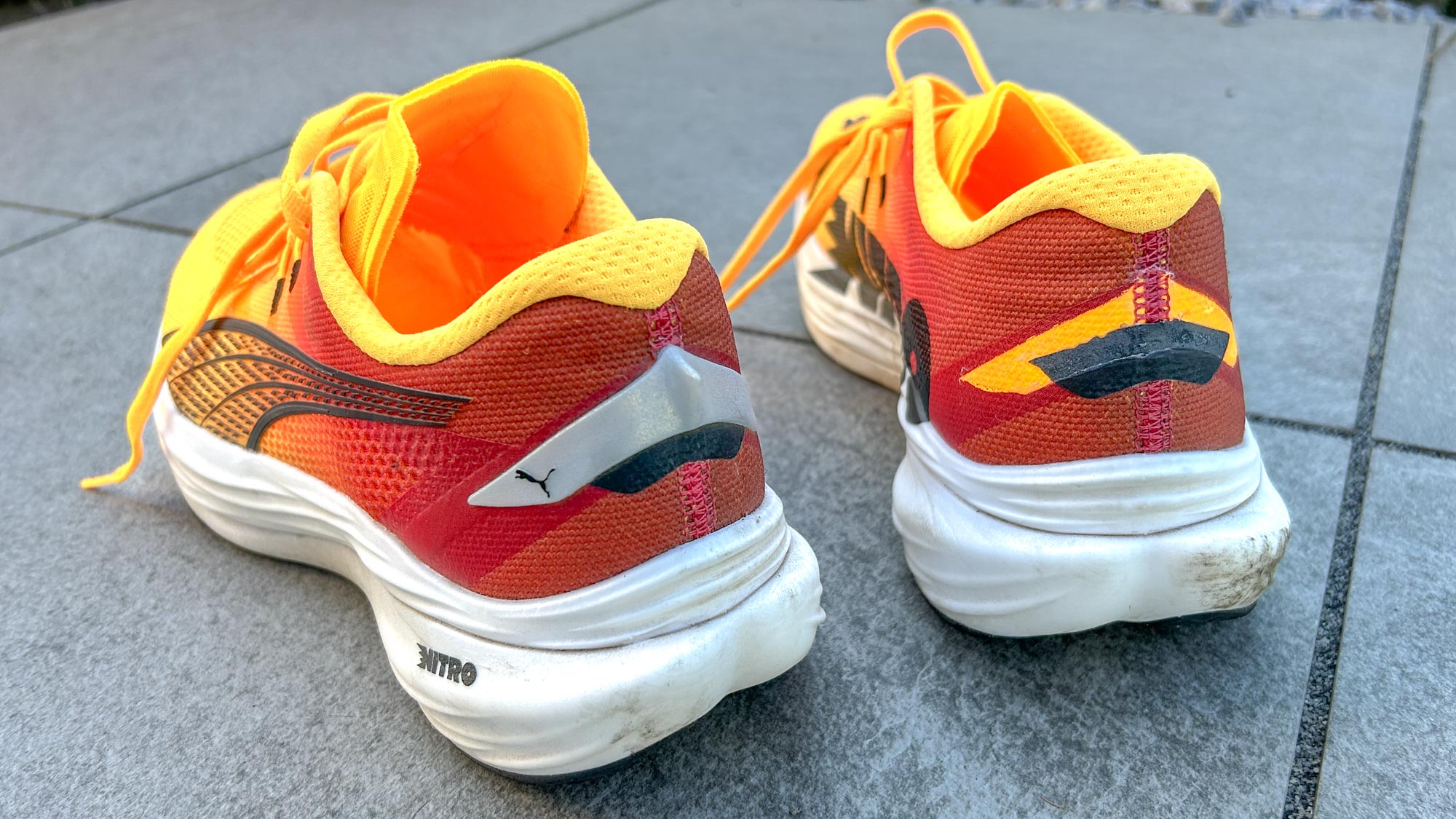
The Puma Deviate Nitro 3 fits me well in terms of length. I have my normal running shoe size and I have the right amount of room in the toe-box. However, I have had consistent problems with the heel design of the shoe, which has irritated my Achilles tendons on every run.
It was bad enough that I pulled the plastic external heel counter off one shoe to see if it helped, but it didn’t make much of a difference. I am sensitive to Achilles irritation from shoes so this might not affect everyone, and I’m not sure exactly what is causing the problem, be it the shape of the padding or the internal heel counter, but it’s something to look out for if you do suffer from similar issues.
Puma Deviate Nitro 3 review: running performance
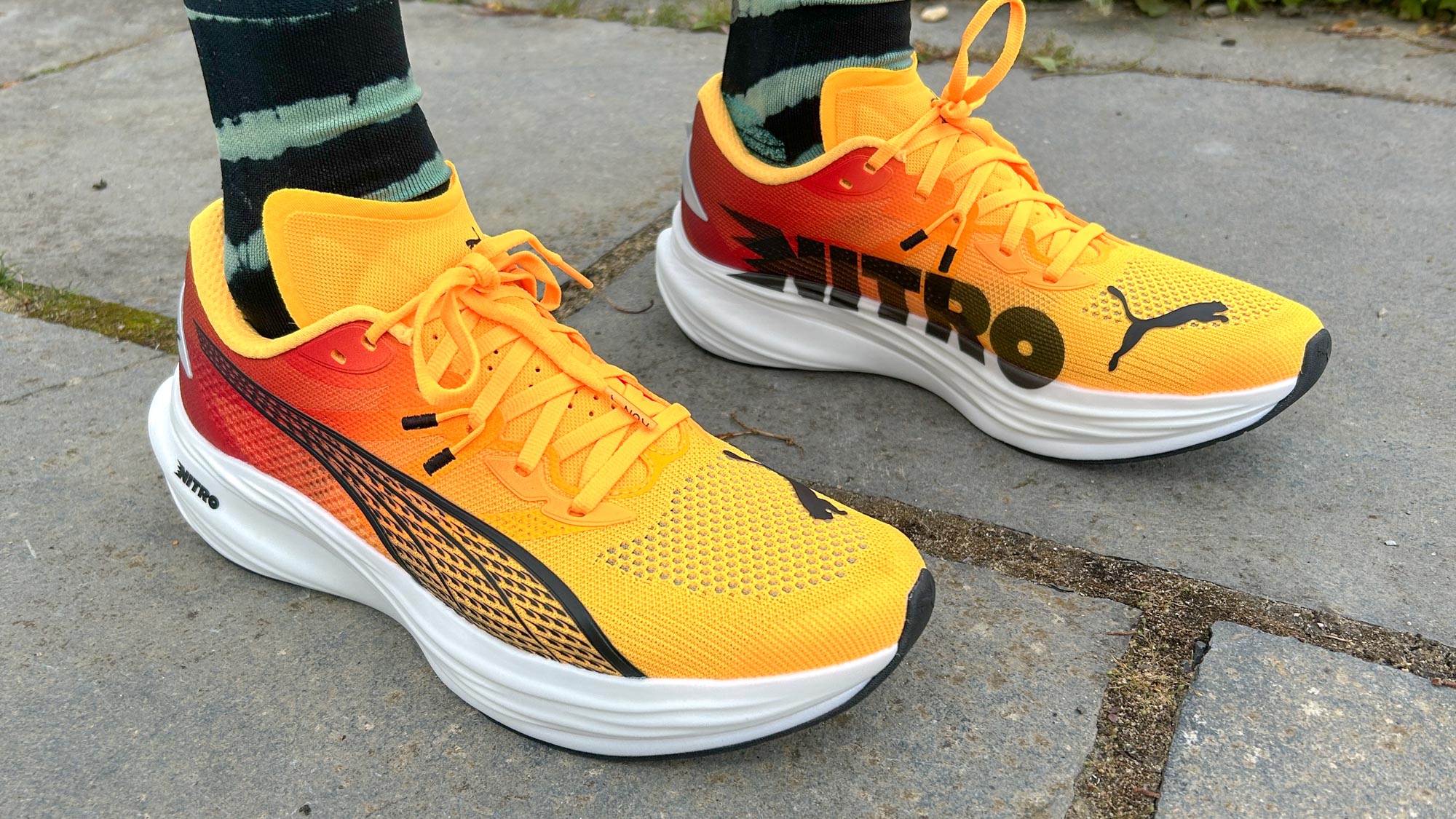
I have tested all three versions of the Deviate Nitro to date, along with many other super-trainers, and I considered the Deviate Nitro 2 to be one of the better options on the market. With the Deviate Nitro 3 mostly sticking to the same setup, with just a touch more foam in the midsole, I thought it would have a similar feel on the run.
However, the ride has been firmer and a little ‘slappier’ for me, with my forefoot hitting the ground harder (and more loudly), perhaps because of the higher drop of the new shoe. For my first couple of runs in the shoe it was also uncomfortably stiff, but this has eased up with more miles as the shoe has broken in.
I used the shoe for a mix of easy and fast training runs and the ride works well for both, but when pushing to really fast paces I did feel the weight of the shoe a little, and the midsole foams are not as bouncy as with some other shoes, like the Mizuno Neo Vista. The ride is also not as smooth as more rockered shoes like the Saucony Endorphin Speed 4.
Then, at easier paces the shoe is not as comfortable as a regular cushioned training shoe, like Puma’s own Velocity Nitro 3. It’s versatile, but it didn’t excel for any particular kind of run in my testing, and even if you are looking for an all-rounder shoe there are others I prefer.
Should you buy the Puma Deviate Nitro 3?
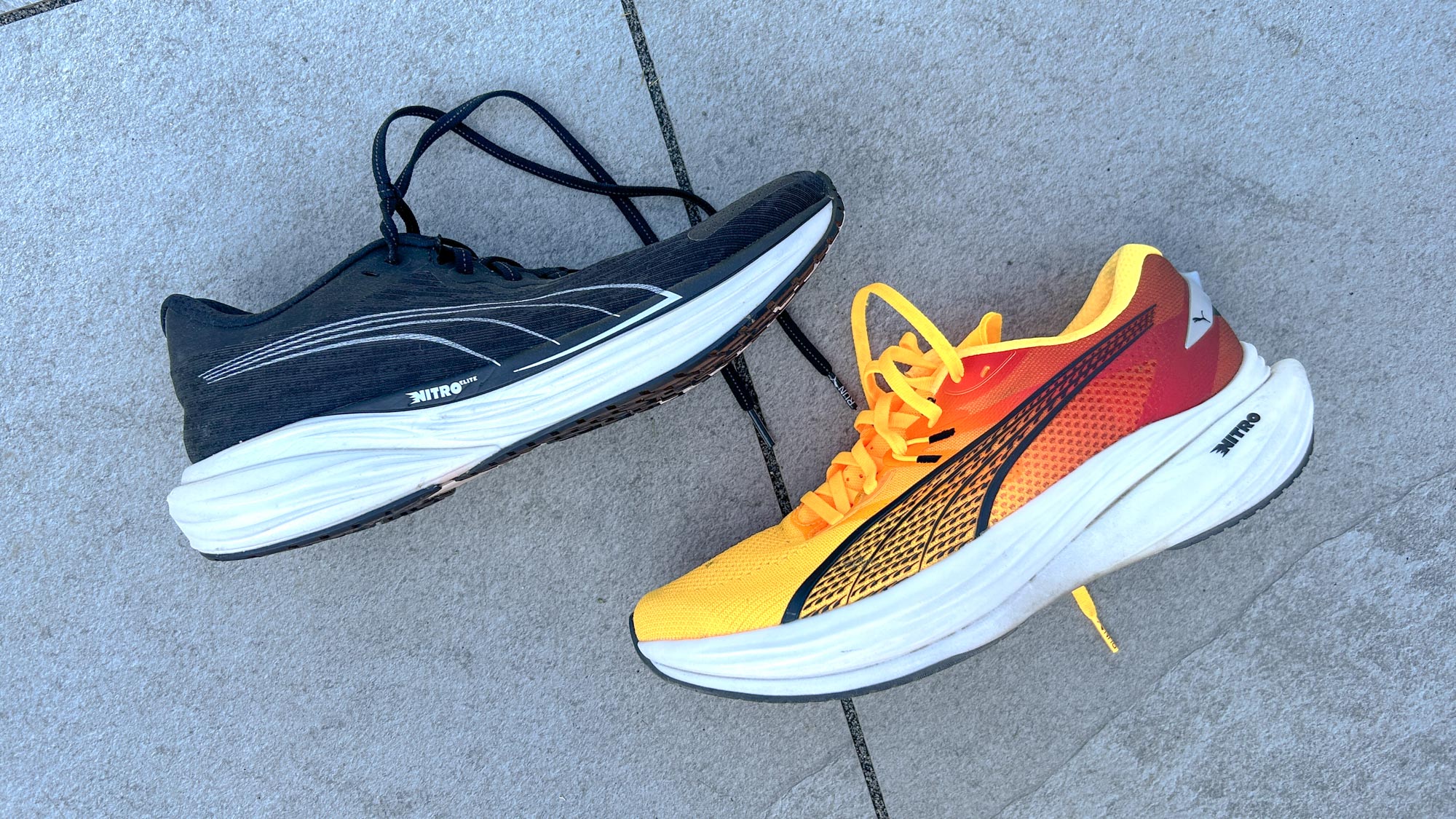
I had high hopes for the Puma Deviate Nitro 3 but the changes made to the shoe haven’t significantly improved the ride or made it faster compared to the Deviate Nitro 2, which is cheaper and now likely to pop up in sales. The Deviate Nitro 3 is a little more cushioned underfoot, but that extra comfort has been undermined for me by the problem with the heel irritating my Achilles tendon.
The best alternatives in the super-trainer category include the Saucony Endorphin Speed 4, Adidas Boston 12 and Mizuno Neo Vista, all of which are lighter and speedier, and I also found them more comfortable in my testing. The Puma Deviate Nitro 3 is by no means a bad shoe, but I don’t think it matches the performance of those rivals.

Nick Harris-Fry is an experienced health and fitness journalist, writing professionally since 2012. He spent nine years working on the Coach magazine and website before moving to the fitness team at Tom’s Guide in 2024. Nick is a keen runner and also the founder of YouTube channel The Run Testers, which specialises in reviewing running shoes, watches, headphones and other gear.
Nick ran his first marathon in 2016 after six weeks of training for a magazine feature and subsequently became obsessed with the sport. He now has PBs of 2hr 27min for the marathon and 15min 30sec for 5K, and has run 13 marathons in total, as well as a 50-mile ultramarathon. Nick is also a qualified Run Leader in the UK.
Nick is an established expert in the health and fitness area and along with writing for many publications, including Live Science, Expert Reviews, Wareable, Coach and Get Sweat Go, he has been quoted on The Guardian and The Independent.
